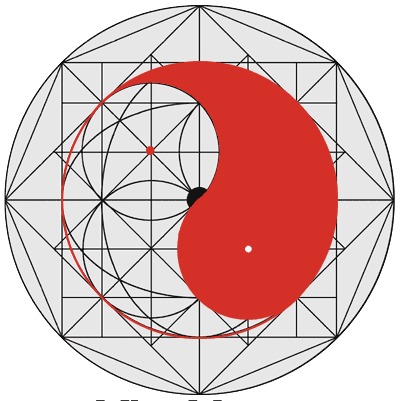
This section will cover the analysis of Long Form Two from the perspective of reverses and opposites. Since one of the major purposes of an American Kenpo form is to demonstrate reverses and opposites, a section on just this information is warranted. But, before continuing forward into this section an overview of what constitutes a reverse as opposed to an opposite is needed.
Reverse
Reverses tend to be more physically oriented and precise than an opposite. This typically manifests itself in a form in a much more limited way than an opposite. A reverse is typically directly related to physical direction and/or sequence order.
Examples of reverse directions are:
•travel on a 12:00 / 6:00 path vs travel on a 6:00 / 12:00 path
•movement directly forward vs directly backward
•clockwise rotation vs counter-clockwise rotation
Sequence order deals with multiple maneuvers. Examples of reverse sequence order are:
•block / punch vs punch / block (i.e. 1 / 2 vs 2 / 1)
•block / punch / kick / vs kick / punch / block (i.e. 1 / 2 / 3 vs 3 / 2 / 1)
Things to keep in mind when determining whether something is a reverse are:
•reverses are more precise in nature than opposites
•reverses tend to be physical not conceptual
•all reverse are opposites, but not all opposites are reverses
Examples of things that may appear to be reverses, but under closer scrutiny clearly aren't are:
•travel on a 12:00 / 6:00 path vs travel on a 1:30 / 7:30 path
•diagonally upward vs straight ahead travel
•1 / 2 / 3 vs 1 / 3 / 2 sequence change
•block / punch vs punch / strike
Opposite
Opposites tend to be more conceptually oriented than a reverse. This typically manifests itself in a form in a very broad way and can be derived from any number of perspectives. Something that is not determined to be an opposite from one perspective may be determined to be, if looked at from another perspective. For example; a two-finger poke is not an opposite of a four-finger poke, by itself. But if one poke is oriented (rotated) vertically and the other is oriented (rotated) horizontally, or if one poke is from the left hand and other poke is from the right hand - they would qualify as opposites. This would be from the perspective of plane orientation or body side, rather than from the perspective of point(s) of contact or opening / closing of a weapon.
Examples of opposite categories are:
•Side - left vs right / top vs bottom
•Intention - defense vs offense
•(general) Direction - in vs out / up vs down / forward vs backward
•Contact Point - top vs bottom / front vs back / any opposite side
•Orientation - palm up vs palm down
•Plane - horizontal vs vertical
•Weapon Configuration - open vs closed
•Weapon Range - close vs far
•Travel Surface Exposure - Path of Travel (length) vs Line of Travel (tip)
•Sophistication - simple vs sophisticated
•Weapon Hardness - hard (contact point) vs soft (contact point)
•Travel Path - circle vs line
•Method of Execution - snapping vs thrusting / hammering vs thrusting
Things to keep in mind when determining whether something is an opposite is:
•opposites must be diametrically opposed (i.e. extremes of one another)
•'degrees of' are not opposites (i.e. fully closed vs partially open)
•all reverses are opposites and can coexist in both categories
•always look at the comparison from different perspectives
Examples of things that may appear to be opposites, but under closer scrutiny clearly aren't are:
•'degrees of' - such as: rotation / open
•Zone - top vs middle / middle vs bottom
•Number of contact points (with fingers - i.e. 1 vs 4)
•Method of Execution - whipping vs snapping
Notes
The analysis in this section does not illustrate the perspective from which the determination of reverse / opposite was derived. That information is purposely left up to the reader to resolve.
The analysis in this section is limited to only the information contained in Short / Long Form Two and Short / Long Form One. It does not include information from future forms.